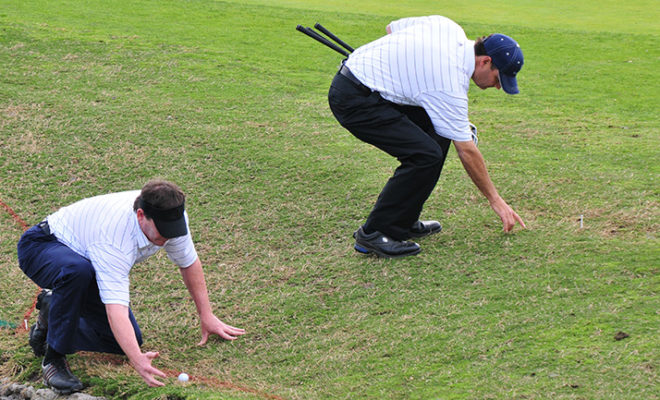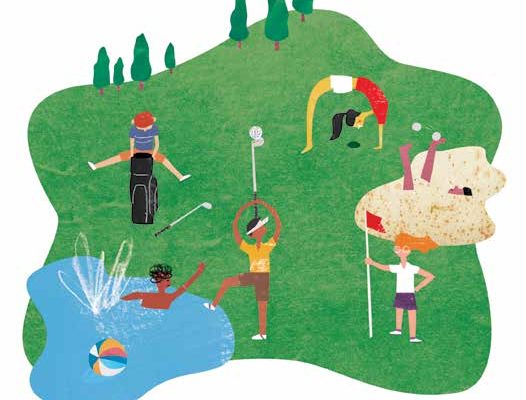Modernizing The Rules: Behind-the-Scenes

FOR THE PAST SIX YEARS, the USGA and R&A have worked together on a major refurbishment of the Rules of Golf. Recognizing that it had been over 30 years since the last major revision, in 1984, both sides agreed on an overhaul of the game’s fabric. The SCGA’s Jeff Ninnemann had a chance to speak with Thomas Pagel, Senior Managing Director, Governance at the USGA to discuss the behind-the-scenes happenings during this exciting time.
Jeff Ninnemann: Why did the USGA and R&A feel there was a need to modernize the rules of golf?
Thomas Pagel: It all started back in April of 2012 as leadership from the R&A and USGA came together. The first question that was asked by this small group of leadership was: Have the rules become too complicated for the majority of golfers to understand? And, if so, are we willing and able to do something right now? The answer to both of those questions was yes. The level of collaboration and the energy that was there was amazing from the start, and we were off and running.
From a presentation standpoint, the number one objective of the project was to make the rules easier to understand and easier to apply. It wasn’t about simplifying the rules. We know it’s a complicated game and when you have thousands of playing fields across the world that are not similar, then the rules need to anticipate anything that can and will happen. There’s a certain level of complexity that the rules will always have.
With a project of this scale, how do you even find somewhere to start? Can you walk us through what that roadmap for the USGA and R&A looked like?
We just set out to really lift the hood of the Rules book. We wanted to look at every rule and every outcome that’s been produced and challenge ourselves to ask if this is the right outcome for the game, knowing that we had to adhere to the traditions and principles of the game as well. We still wanted it to be the game of golf where you have a white ball that you hit with a club and you chase it around and you find it again. All those things had to be maintained, but we knew we had to look at everything.
I explain it as a jigsaw puzzle and so the first thing we had to do was pull the jigsaw puzzle part. From that point we expanded past leadership and brought in people like former USGA and SCGA president Jim Vernon, who joined the rules modernization group early on. It was Jim and others who really helped us as we evaluated every rule, the outcome of every rule and the history of every rule so we could really understand how we got to where we were.
What got the most dedicated discussion time? Was there a topic that took a really long time to sift through?
Relative to all the other conversations, it absolutely had to be the relief procedures — both the combination of dropping and the size of relief area.
I can’t even tell you the hundreds of hours of time that were dedicated to those two topics, but those are two of the most visible rules you’re going to see and recognize as you play the game. How you measure and take relief was something we wanted to make sure we got right.
ADVERTISEMENT
What do you think will be the most impactful change?
I just think the totality of the changes are so impressive it’s hard for me to just pick one out. We do find that the rules are easier to understand, and I think about the improvements to pace of play. Little things like moving your ball while trying to search — the current rules penalize you if you or your caddie were to accidentally move your ball, but if anyone else moves the ball during search you’re OK, you just put it back. So why does that not apply to the player as well? I think of little changes like that as having a big impact. Another example is moving the search clock from five minutes to three minutes. There are so many little things that will really have a big impact on the game.
How do you think the viewing experience will be different for those that do tune in for the U.S. Open? Do you think this will change the way the commentators have to know the game, and will it change the way the game looks on TV?
The short answer is no, I don’t think it will change how the game looks. Having played under these rules a number of times, I can tell you it’s still the game of golf. The one thing that obviously looks different will be some of the things like taking relief or having the option to leave the flagstick in the hole if you choose, so there may be a couple of things that catch people off guard. Ultimately, I think all of those will quickly become the norm, so I don’t think it’s going to change the viewing experience. In fact, I think it will help speed up play with the number of changes. At the end of the day, it’s the same product.
Do you think it will make the game any easier?
There was never an intent or objective to make the game easier by revising the playing rules. Even given the significance of the changes I don’t think it’s going to make the playing of the game any less difficult. However, being able to more easily understand the rules can be advantageous to a player. Knowing the rules is a good thing. A lot of people assume rules are just about penalties, but the truth is they give you options and help you decide how to proceed. By making the rules easier to understand, perhaps players become a bit more aware of what their options are.
Was there a change that you hoped would occur but couldn’t quite get there?
That’s another good question Jeff. I can’t say that there was, but the one thing we all recognize is that when the lights turn on Jan. 1 we’re all going to learn a couple things. It’s possible my answer will change then, but as I sit here today I’m happy with where we ended up and I can’t think of any area where we just couldn’t get what we wanted.
Again, the level of collaboration across the working group in the Rules of Golf Committee was such that we all had a singular focus and everybody was on the same page and ended up in a great spot.
What do you foresee as perhaps the biggest challenge in 2019 for players, officials and facilities?
I would say the rule that people will take the most time getting used to would be how you take relief–going down from shoulder height to knee height. I think it’s just going to take a little re-training, and at the end of the day, if you look at the major changes, if you were to operate the same way on Jan. 1, 2019 as Dec. 31, 2018 you’re not really going to get in any trouble.
Now, there are a number of things that you would do on Dec. 31, that you would be penalized for that you wouldn’t be on Jan. 1. I think about how much the roles have been reversed and now favor the players, it will make for a much easier transition but there are going to be little things we learn throughout. Players are going to learn how to take advantage of the changes as a benefit to them rather than thinking it will be a necessity for them to learn at a fear of penalty.
What’s perhaps been the biggest takeaway from public feedback so far?
The biggest takeaway is that golf is such an amazing game and that golfers across the country are so passionate. You know, we asked for feedback back in 2017, and we really didn’t know what to expect. But over the course of six months we received more than 30,000 pieces of individual feedback from golfers from 102 countries. It was great to see how passionate golfers are and how interested they are in being involved in the process of supporting the game. We are all very fortunate to have some small role in this game.











